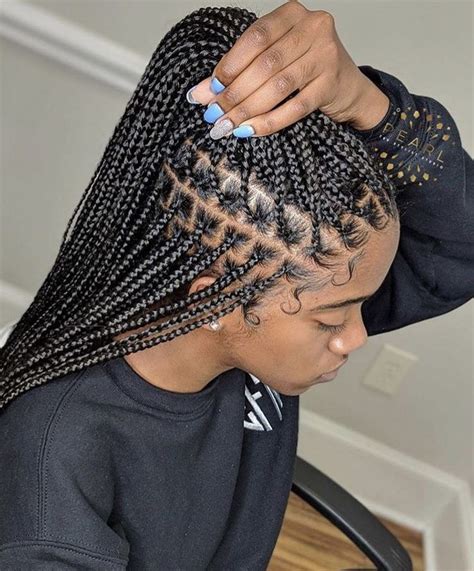Discover expert tips for choosing, preparing, applying, monitoring, and caring for hair during the bleaching process. Achieve your desired results effectively and safely.
Choosing the Right Bleaching Product
Contents
When it comes to bleaching your hair at home, one of the most important steps is choosing the right bleaching product. There are several factors that you need to consider before making your selection. First and foremost, take into account your natural hair color and the level of lightness that you desire. If you have darker hair, you may need a stronger bleaching product to achieve the level of blonde that you want. On the other hand, if your hair is already relatively light, you may be able to achieve the desired result with a milder bleach.
Another important consideration when choosing a bleaching product is the condition of your hair. If your hair is already damaged or chemically processed, you’ll want to opt for a gentler bleach that minimizes potential damage. Look for products that contain conditioning agents and oils to help protect your hair during the bleaching process. Additionally, consider the reputation of the brand and read reviews from other users to gauge the effectiveness and safety of the product.
It’s also important to take into account your proficiency with at-home hair treatments. If you’re new to bleaching your own hair, you may want to start with a kit that includes detailed instructions and everything you need for the process. On the other hand, if you have experience with at-home bleaching, you may be comfortable using a standalone bleaching powder or cream.
Ultimately, the right bleaching product for you will depend on your individual hair type, color, and experience level. Take the time to research different products and consider seeking advice from a professional stylist if you’re unsure about which product to choose. Making an informed decision at this stage will set the foundation for a successful at-home bleaching process with proven results and minimal damage to your hair.
Preparing Your Hair for Bleaching
Before you start the bleaching process, it’s important to properly prepare your hair to minimize damage and achieve the best results. The first step in preparing your hair for bleaching is to ensure that your hair is in good condition. This means addressing any existing damage or dryness by deep conditioning your hair in the weeks leading up to the bleaching process. Use a high-quality deep conditioning treatment to nourish and strengthen your hair, paying special attention to the ends and any areas that are particularly dry or damaged.
Once your hair is in good condition, it’s important to consider your natural hair color and the level of lightness you want to achieve. If your hair is dark, it may be necessary to pre-lighten or lift the color before applying the bleach. This can be done using a gentle lightening or color remover product, but it’s important to follow the instructions carefully to avoid over-processing or damaging your hair.
In addition to addressing any existing damage and lightening your hair if necessary, it’s also important to ensure that your hair is free of any product build-up. Use a clarifying shampoo to remove any residue from styling products, conditioners, or other treatments, as this can interfere with the bleaching process and prevent the bleach from penetrating evenly. This step is crucial for achieving even and consistent color results when bleaching your hair at home.
Finally, it’s important to protect your scalp and hairline before applying the bleach. Apply a thin layer of petroleum jelly or a similar protective barrier around your hairline to prevent the bleach from coming into contact with your skin. This can help to minimize irritation and reduce the risk of chemical burns, which can occur if the bleach comes into direct contact with your scalp or skin.
Applying the Bleach Effectively
When it comes to bleaching your hair at home, it’s important to take the necessary steps to ensure that you achieve the desired results without causing damage to your hair. One of the key steps in the bleaching process is applying the bleach effectively.
Before you begin the bleaching process, it’s crucial to carefully read and follow the instructions provided with the bleaching product. This will help you understand the proper application techniques and avoid any potential mistakes that could lead to damage.
Once you have familiarized yourself with the instructions, it’s time to prepare your hair for the bleaching process. This involves sectioning your hair and applying a protective barrier, such as petroleum jelly, around your hairline to prevent the bleach from coming into contact with your skin.
When applying the bleach, it’s important to work quickly and evenly to ensure that the product is distributed throughout your hair. Using a brush or comb can help you evenly apply the bleach from root to tip, making sure that all strands are thoroughly covered.
After applying the bleach, it’s crucial to closely monitor the
Monitoring the Bleaching Process
Once you have applied the bleaching product to your hair, it is crucial to monitor the bleaching process carefully to prevent over-processing or damage. One important aspect to watch for is the color change in your hair. Depending on your hair color and the type of bleaching product you are using, your hair will go through different stages of lightening. Make sure to check your hair every 5-10 minutes to assess the level of lightening and to avoid leaving the bleach on for too long.
Additionally, pay attention to any signs of damage during the bleaching process. If you notice that your hair is becoming overly dry, brittle, or starting to break, it is important to rinse out the bleaching product immediately. It is better to have slightly darker hair than to risk causing irreparable damage to your strands.
Another crucial aspect of monitoring the bleaching process is to keep track of the time. Set a timer to ensure that you are checking your hair at regular intervals, and make sure to follow the instructions provided with the bleaching product regarding the maximum time the product can be left on your hair. Over-processing can lead to extremely damaged hair, so it is important to be vigilant about timing during the bleaching process.
Using a color chart can also be helpful when monitoring the bleaching process. This can give you a clear indication of how light your hair has become and whether you have achieved the desired level of lightness. Comparing your hair to the color chart can help you determine when it is time to rinse out the bleach and stop the bleaching process.
Finally, if you are unsure about any aspect of the bleaching process, it is always best to seek advice from a professional hairstylist. They can provide guidance on monitoring the bleaching process and offer solutions if any issues arise during the process.
Post-Bleaching Hair Care Tips
The following HTML content applies to the title Post-Bleaching Hair Care Tips:
“`html
After bleaching your hair, it’s important to give it some extra care to keep it healthy and looking its best. Here are some post-bleaching hair care tips to help you maintain your newly bleached locks:
Use a Deep Conditioning Treatment: Bleaching can leave your hair feeling dry and brittle. Using a deep conditioning treatment once a week can help replenish moisture and keep your hair soft and manageable.
Avoid Heat Styling Tools: After bleaching, your hair is more susceptible to damage from heat styling tools. Try to limit your use of blow dryers, curling irons, and straighteners, and use heat protectant products when you do use them.
Trim Regularly: Bleaching can weaken the hair, making it more prone to split ends and breakage. Regular trims can help keep your ends healthy and prevent further damage.
Protect Your Hair from the Sun: Sun exposure can cause bleached hair to become even more damaged. Wear a hat or use a UV-protectant spray when spending long periods of time in the sun.
“`












